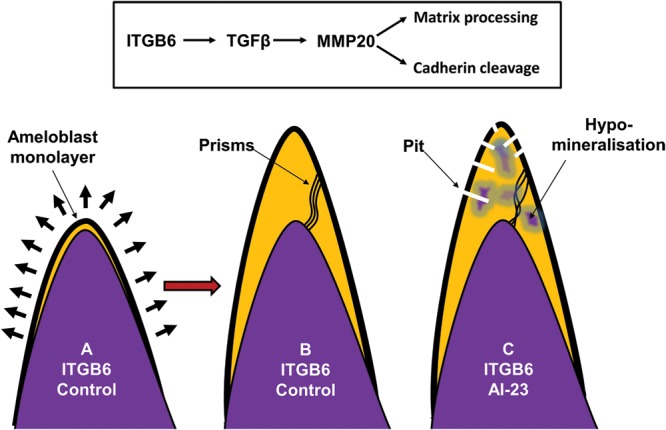Figure 5.

Cartoon summarizing the hypothesis presented here to explain the mechanism underpinning the AI subtype described. (A) At the beginning of normal enamel secretion, an army of ameloblasts, present as a monolayer, migrates away from the preformed dentine surface leaving the enamel matix in their wake. (B) As the cuspal enamel volume increases the ameloblasts modulate cell–cell contacts to cope with the stresses encountered by the monolayer being required to cover an ever expanding area. We hypothesize that ITGB6 upregulates MMP20 expression (via TGFβ activation). This in turn cleaves cadherin, thus allowing ameloblasts to modulate cell–cell contacts to cope with the increasing stress of an expanding enamel surface and to allow cohorts of ameloblast to move relative to one another to produce a sinusoidal prism architecture. MMP20 also processes enamel matrix proteins, which is required for their final degradation prior to the completion of mineralization. In affected enamel, we hypothesize that cadherin cleavage and matrix processing are compromised due to the ITGB6 mutation resulting in breaks in the ameloblast monolayer in the cuspal regions leading to pitting, abnormal prism architecture and retained matrix proteins that inhibit final enamel mineralization.
